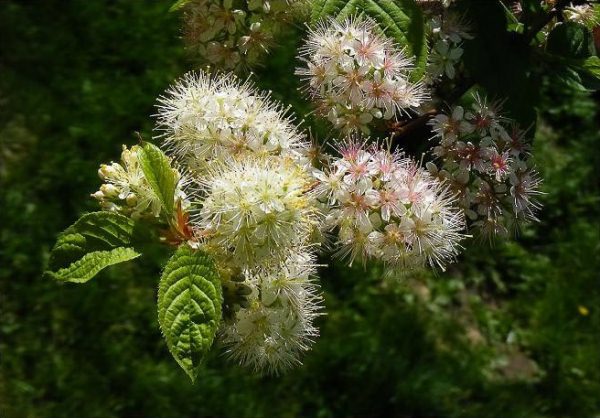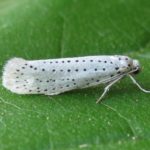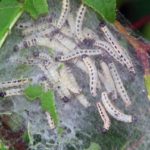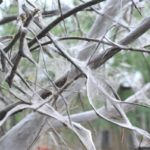Prunus - an amazingly beautiful tree, with the flowering of which is associated with the perception of spring. But, many gardeners do not plant it on their plots, considering that this plant attracts all sorts of parasites, even contributes to their reproduction and resettlement in the garden. In this article, let's take a closer look at the description and rules of care for the Maak bird cherry.
In fact, quite the opposite, the leaves and inflorescences of the tree emit a large number of phytoncids, which are a deadly poison for most harmful microorganisms and small insects, such as mites, midges or mosquitoes. That is why, if you leave a large bunch of bird cherry in the room, people get a headache.
Also Do not forget about the tasty and healthy berries, which gives this tree. Of these, you can make jam, compotes, use as a filling for baking, or simply eat, provided that the planted variety is edible.
At the moment, there are about twenty varieties of this wonderful plant available to gardeners, both with edible fruits and ornamental ones, including Maaca bird cherry.
Table of contents
Bird cherry description Maak variety
Prunus, known to gardeners as Maak, was first described in detail by the world-famous botanist Franz Ivanovich Ruprecht, for the Austrian Botanical Society in 1857. BUT This variety got its name from the surname of Russian naturalist and researcher Richard Karlovich Maak.who described her during his travels in the Far East, the valleys of the Ussuri and the Amur in 1855-59.
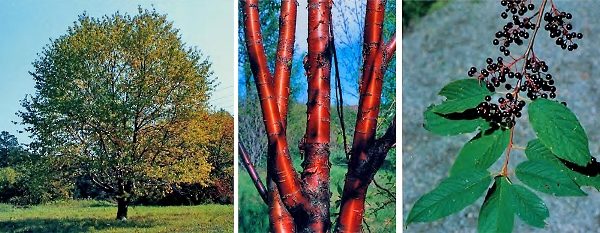
In nature, this is not at all similar to the bird cherry growing in Siberia, the tree is found along the banks of rivers and streams in China, Korea, and in Russia - in the Far East.
It is impossible not to notice such beauty - fluffy emerald leaves, light yellow shoots and white flowers scattered on the crown in the spring, or clusters of berries black with a purple tint at the end of summer. The bark is particularly impressive - from golden bronze to brownshining in the rays of both the sun and the moon, exfoliated by transverse stripes, which creates the appearance of a shaggy, translucent fringe.
Tree height in the wild reaches 16-18 meters, but trunk – 40 cm in diameter. This bird cherry blossoms at the end of spring, with small flowers gathered in elongated brushes.
By the middle of July, the stone berries are ripening. The clusters are very beautiful, but the fruits themselves are inedible for humans, due to the strong bitterness and very painting flesh. But, if you still risk and swallow a couple of berries, except for the long purple color of the tongue, you can get a good laxative effect.
Birds and squirrels are very partial to ripened drupes, and fallen berries very quickly pull apart hedgehogs.
The tree is extremely interesting not only for its external originality, but also for universal characteristics that allow this species to feel wonderful in almost any summer cottage in the middle lane.
Bird cherry Maak:
- frost resistant, easily tolerates sub-zero temperatures up to 40-45 degrees;
- not very demanding on soil, grows on any ground, but most impressively looks where it is planted on well moistened sandy loams.
- not susceptible to droughts, only a sapling needs watering in the first year of planting, but not always;
- calmly transfers temporary flooding and prolonged rains;
- can grow in the shadebut it feels much better in the open sunny glade;
- care comes down to shaping the desired crown shape;
- indifferent to haircuts, transplanting, tiled, iron or asphalt pavement over the root system;
- possesses very rapid growth;
- propagated by seeds, but will not be against breeding with the help of cuttings.
Indeed, a completely universal variety.
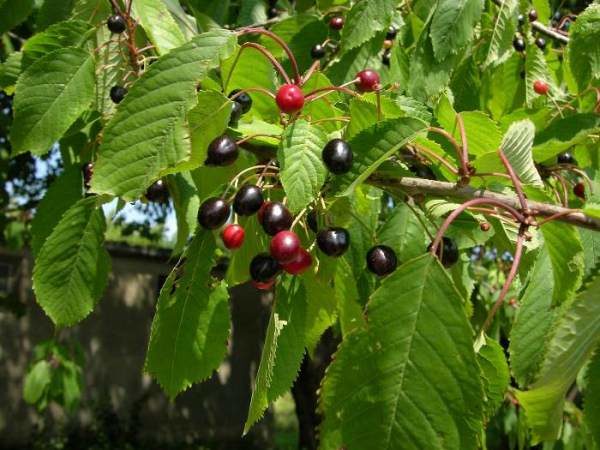
These qualities attracted the most famous breeder Michurin in the Maak bird cherry tree when he and his staff worked to improve the cherry characteristics. During the first crossings, many hybrids were obtained, of which in further work we used only the results of combining bird cherry with steppe cherry and the Ideal. Presented to the botanical world and gardeners, the finalized species of hybrid trees are known under the general name cerapadusy, that is, cherry cherry.
Characteristic varieties Maak
Prunus maackii, or Padus maackii, as in botanical Latin, this species of bird cherry is called, has the following characteristics, interesting for the gardener:
- tree height on average reaches the plot 10-11 meters;
- shoots straight, "Standing", pubescent with alternate leaf position;
- oval leaves, simple with jagged edges and a pointed tip;
- inflorescences racemes;
- white flowerson average in 1 cm, pyatilepestkovye, with a rich aroma;
- fruits inedible for humans berriesin the ripening state - red, in the mature stage - violet-black, purple.
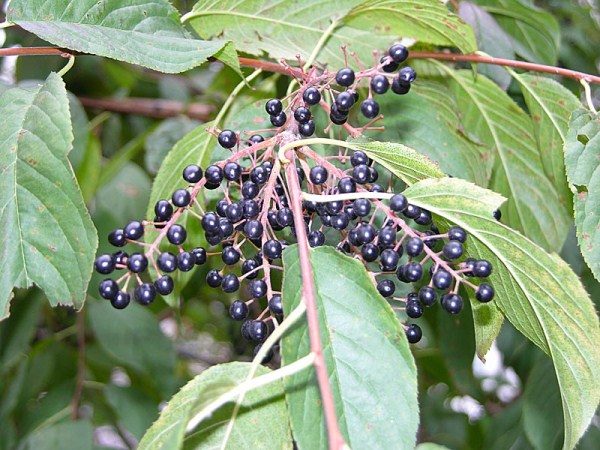
Advantages and disadvantages
Among the indisputable advantages to planting a bird cherry on your own dacha plot are the following:
- unpretentious to the composition of the soil;
- does not require careful maintenance;
- scares away midges, mosquitoes and ticks;
- does not need watering, except for the first year of life;
- possesses unlimited potential for creating landscape compositions;
- fast growth;
- grows in the bright sun and in the shade.
The disadvantages of planting this tree in the garden include such moments as:
- light loving wood, the minimum distance between seedlings should be 5 meters, and if the bird cherry is determined to reside in the shade, then more;
- plentiful basal growth;
- inedibility of stonewith which the Maacka variety bears fruit;
- opportunity to get headaches with a long stay near the flowering tree;
- attracting bees, bumblebees and wasps in the flowering period, which is extremely dangerous for people with allergies.
Landing rules
Choose a place for bird cherry Maak is not difficult, it will look great and well take root in every corner of the garden. If there are wet places on the site, for example, due to the close approach of the groundwater, then the tree will dry such a surface perfectly..
From an aesthetic point of view, this plant is combined with almost everything in the world, looks great both in the group of plantings, for example, when it alternates with shrubs along the boundaries of the plot, and independently, against the background of lawn grass, in a corner of outbuildings.
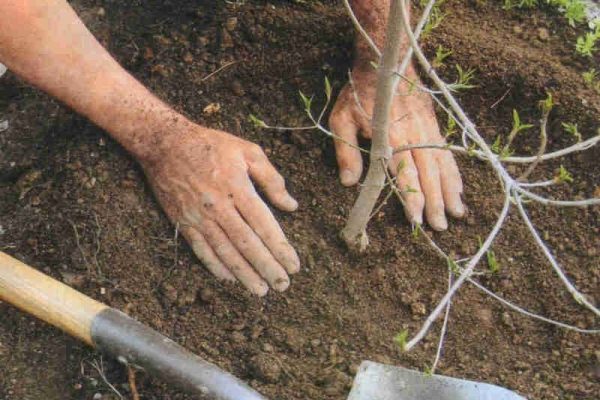
This variety is very impartial, tolerates transplant well, quickly adapts and takes root in a new place, therefore, there are no special tricks when planting a tree. General guidelines should be followed, such as:
- prepare a landing pit, it is not necessary to deepen and take a great interest in fertilizers, especially organic ones, their excess can ruin a sapling;
- optimum seedling height 70-75 cmIf the planting material is higher, it is better to shorten it;
- when planting two or more plants, which is good for cross-pollination, the distance between them should be 5-6 meters;
- in the pit need spread the roots and fall asleep, watering abundantly;
- soil around planting a little mulch.
Tree care
It is easy to care for the bird cherry - in the first year or two of its life on the plot, the tree should be watered periodically, just in the first years of plant growth, it is important to pay attention to the formation of the future crown.
When the first side shoots appear, it is advisable to leave 4-5 most developed and looking in different directions. The same will have to do with the branches growing on them. The upper shoot must be cut in order to maximize the development of the side. It is better to process cuts with garden pitch.

It will have to do for several years. In an already adult tree, if desired, you can thin out the crown.
As for all sorts of fertilizing, it does not make sense to make them more often than once in a couple of years. If you wish, then you can make a little mineral dressing before flowering bird cherryto extend its deadlines and make it more abundant.
Diseases and pests
Any bird cherry, including varieties Maak, resistant to various pests. But this does not mean that the tree can not get sick at all.
The most frequent ailments that overtake this plant are fungal diseases. Fungus infects:
- fruit;
- branches and leaves;
- bark and trunk.
Fruit Diseases
Drugs (the popular name for this type of bird cherry berries) are sick because of deformity, the so-called "pockets". The fungus infects the fruit, resulting in a proliferation of the ovary, that is, the fleshy part and almost no bone develops.
Infected drupe take the form of brown, large, swollen formations with empty cavities inside - pockets. The development of infection leads to a loss of yield and a violation of the decorative attractiveness of the tree.
To protect against this fungus, you need to destroy the damaged fruit, and the tree itself is treated with means containing copper. It will also require treatment of the damaged plant in the spring, before bud break.
Leaves and branches diseases
Leaf Rust
This disease develops mainly in forests and parks, but it can also visit gardens. The fungus that causes this trouble lives in spruce cones. From where he moved to the leaves and branches of bird cherry.
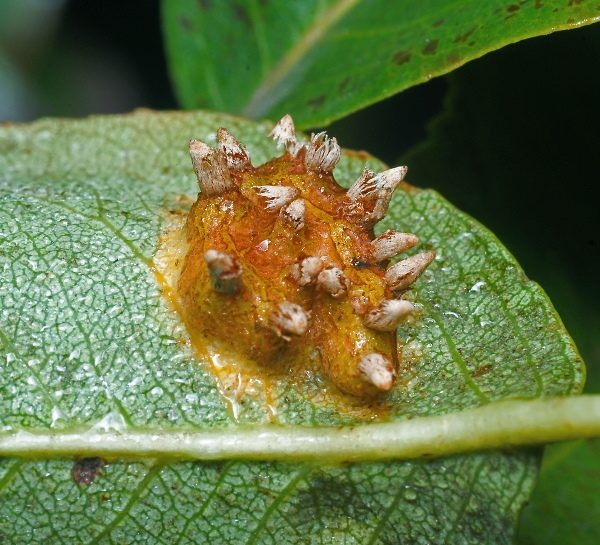
In June, brown or purple spots form on the foliage, the same formation on the branches. By the end of summer, the tree completely loses its aesthetic appeal.
As a struggle with this disease, bird cherry is sprayed with vitriol, find the source of the fungus settlement - spruce and destroy all the bumps on it.
Klesterosporiozy, or spotting
Perforated spotting
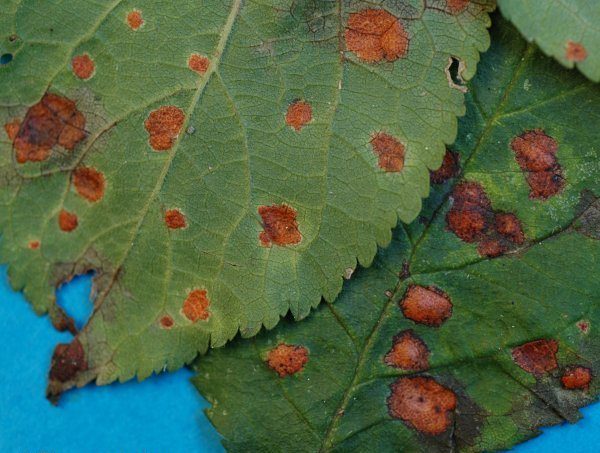
Expressed in June or in the first half of July the leaves are covered with brownish-brown spots with a bright crimson border. Over the course of the disease, these spots fall out, and the tree gives the impression of being pitted with insects.
Brown spot
Toward the end of summer on foliage brown round through spots are formed with a yellow pad on the upper part. This yellowish formation is a fungus sporulation. With a strong development of the disease covers the entire sheet.
Orange spot
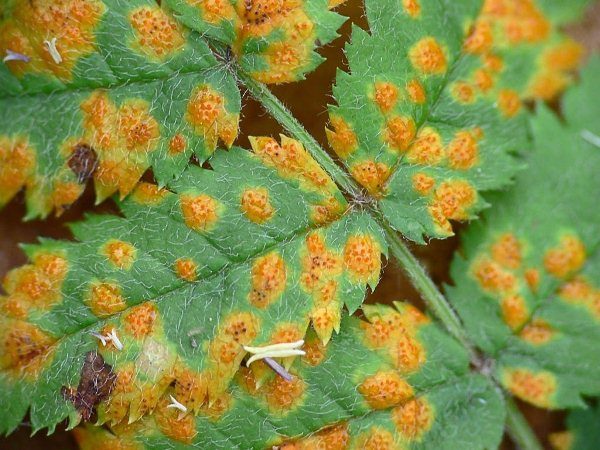
In the middle of summer on the leaves orange angular spots appear, up to 10 mm diameter. Flat, with bright colors. With the development of the fungus can merge, occupying a large area of the leaf. This disease is often found in Siberia and the Far East.
Purple spot
It is characterized by the appearance of round grayish-purple spots with fuzzy, edges floating in the color of the sheet. It may appear throughout the summer and very quickly cover most of the crown of the tree.
In order to combat all types of spotting, palia leaves are destroyed, and the crown of the trees is treated with Bordeaux mixture or foundationol several times during the summer season.
Moniliasis, or monilial burn
An unpleasant disease in which the fungus infects flowers, foliage, shoots and drupes. In the spring, branches start to dry up, acquiring a bright brown color., then the same thing happens with the leaves and shoots.

The fungus develops very well in high humidity, leading the tree externally to the similarity with a victim in a fire.
To prevent and protect against this disease, the damaged areas are cut off and destroyed., and in the spring, before flowering, the tree is treated with Bordeaux liquid. Spray it again after flowering in the fall. Be sure to destroy the fallen leaves.
Diseases of the trunk and bark
Cytosporosis or cytospor necrosis
With this fungal infection, tree bark dies rings on the trunk and branches. Inside these areas there is a clearly visible cluster of small red cones tightly attached to each other - this is the sporulation of the fungus.
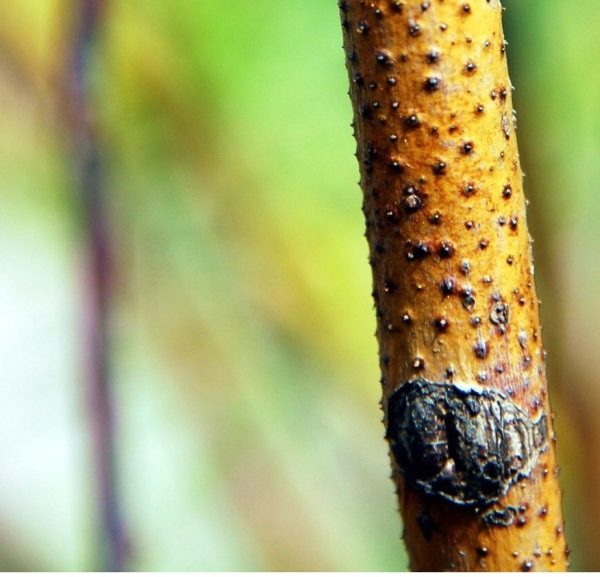
This necrosis usually affects plants weakened by something and can cause the tree to die.
There is no measure to effectively combat this disease, gardeners usually prune damaged areas and destroy them., and the areas of development of the fungus on the trunk are cleaned, washed with soap and copper, disinfected and covered with garden pitch.
Comedication
On a tree there are sites with the released liquid - gum. It is a sticky, resin-like amber substance. It usually accompanies other diseases, such as, spotting, moniliosis, cytosporoz necrosis, as well as mechanical damage to the trunk of the bird-cherry tree, frost-sunburn, which are very rare, but also occur. The disease leads to the death of shoots, branches, and sometimes the bark of a tree..
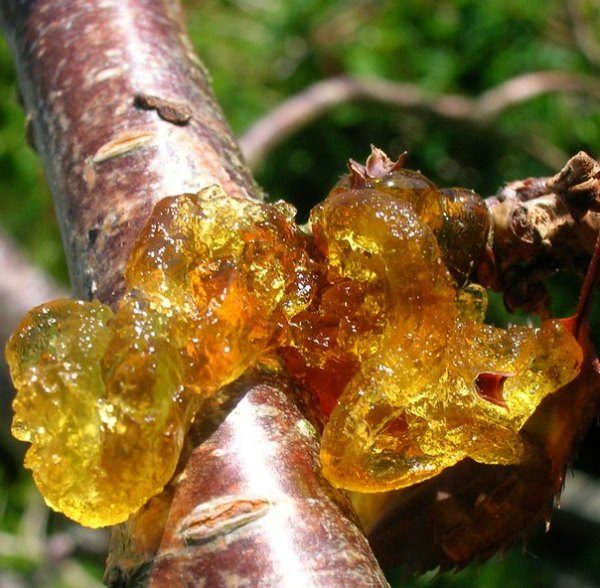
The fight against this infection involves the cure of the bird cherry from the underlying disease and pruning dead branches and shoots, followed by their destruction.
Brown root rot
The disease begins because of the work of the tinder Shveynitsa, that is, simply, rot. The fungus develops in the central part of the root system and directly on the tree trunk.. At the same time at the base of the bird cherry, velvety large mushrooms themselves grow on it.
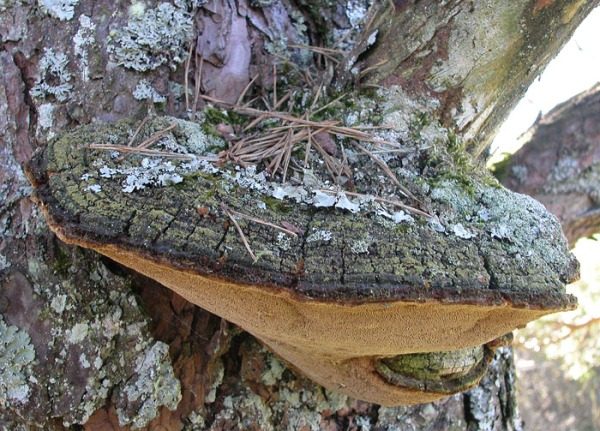
Most often affected are old and weak trees.In the forests, forest parks, urban plantings. In the garden is extremely rare.
Of the rot in the bird cherry, the most common fungi are pathogens such as:
- plum tinder;
- sulfur-yellow tinder;
- purple tinder;
- false tinder
The danger of such a disease is that sooner or later the tree will fall. Only one counter method:
- saw cut;
- uprooting;
- burning the pit.
Bird cherry pests
Bird cherry is very resistant to all sorts of pests., but some still make their way through her protection from phytoncides.
The most frequently overtaking Maak bird cherry trees and insects are:
Sucking pests
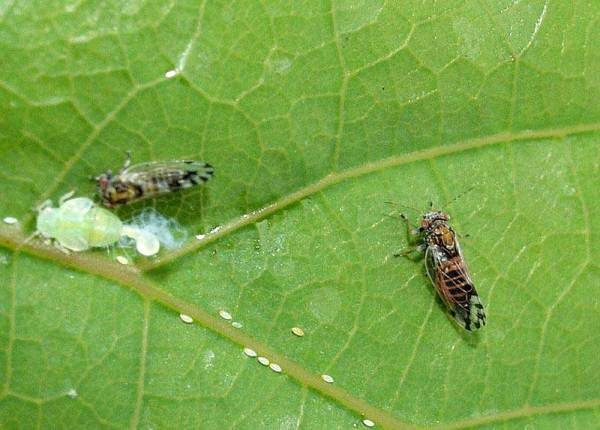
These are all insects that feed on the juice of foliage, buds, shoots, branches and trunk. The most frequent guests and residents of the tree are coccides, leaf batters, vegetable bugs.. Most of them hit other trees in the garden, for example, an apple or plum tree, and then it gets to the bird cherry tree.
Leaf insects
It:
- butterfly caterpillars;
- sawfly larvae;
- leaf beetle larvae and the beetles themselves;
- hawthorn and bird cherry mole.
- Ermine bird cherry mole
- Larvae of bird cherry moth
- Harm from bird cherry moth
Some caterpillars of the same hawthorn moth weave peculiar nests of leaves in which they live and feed.
Miners
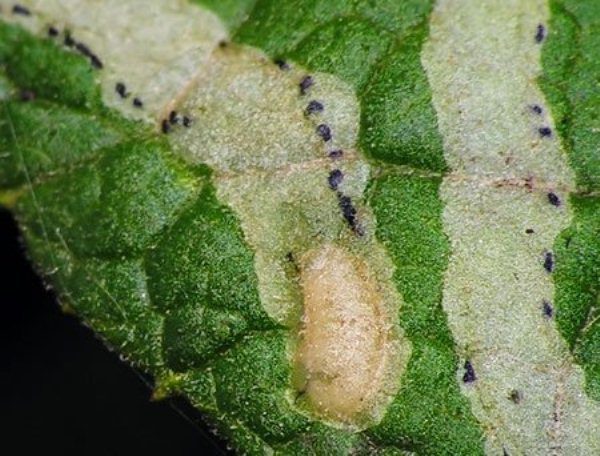
The larvae of this species of pests feed and grow inside the leaf, leaving hollow veinlets in it, different in shape and color. Migrating to bird cherry from apple trees.
Gall formers
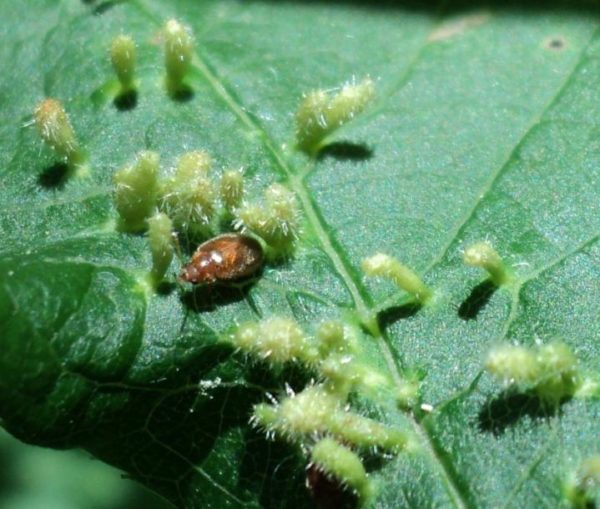
Gauls, made of white or pink horns up to 4 mm in length, are created by mites - Gallic and felt. On the bird cherry are very rare, only in the presence of heavily infected trees nearby.
Stem Insect Pests
These are xylophagous insects, that is, bark beetles and woody trees. On the bird cherry settles about twenty different species, but they affect only old, shrinking or sick trees.
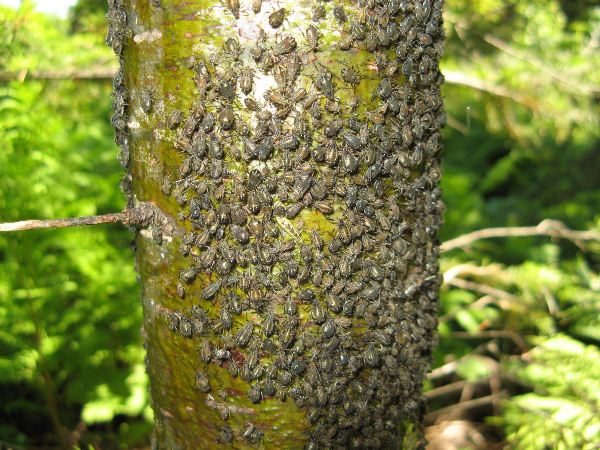
The main way to combat all these pests is chemical. The affected tree must be treated twice with such means as:
- karbofos;
- kinmiks.
With a very strong infection, a third spraying may be required, but, usually, after the second, all insects already die.
Preventive measures include thinning of the crown, pruning of old branches, whitewashing the trunk and the bases of the branches, and, of course, careful monitoring of the condition of the cherry tree neighbors in the garden plot.
Bird cherry varieties Maak - amazingly beautiful tree, which has a number of decorative and useful properties. Despite the fact that its fruits are inedible for humans, they are perfect for the manufacture of medicinal decoctions and infusionsable to solve many bowel problems.
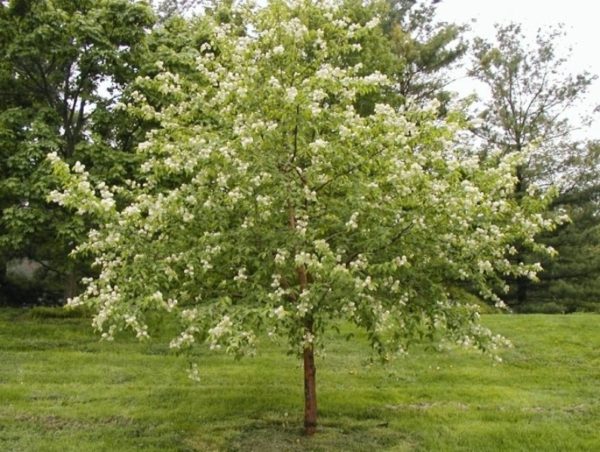
Choosing a bird cherry for your garden, you should pay attention to this completely unpretentious tree, which will fit perfectly into any landscape composition, create a shadow over the rest area and scare mosquitoes from it, and also create a lyrical mood for the garden owners.
Rarely what the tree boasts such disease resistance, ease of survival, unpretentiousness to soils and weather, undemanding care, fast growth and unique external beauty, like Maak bird cherry.
